Materials
In this beginners guide to sculpting with polymer clay, I want to show you some materials and tools that will help you when you want to start making a sculpture. Please note: you don’t need all of what I’m mentioning here to start out and to try yourself, since the cost might be intimidating. The most important thing is that you start sculpting. Everything else can come later, or in steps.
Polymer Clay
This overview to sculpting figures with polymer clay specifically talks about Polymer Clay, but why do most sculpters use Polymer Clay, or a non-curing clay (like for example Monster Clay)? When air drying clay is often much easier to obtain and also cheaper?
Of course, nothing is stopping you from starting to sculpt with air drying clay if you already have some. But there is a reason why most sculptors are not going with it: time. Often a project will take multiple days to complete, sometimes weeks or up to a year. It is hard to keep air drying clay workable over an extended period. You can wrap it into moist cloth, but will run into the problem to keep it the right amount of moist. Or it will still harden up or get too wet, which can cause it to collapse or mold.
That being said, I would personally advise you to take that money in your hand and get some polymer clay.Which clay you want to use is up to you and your preferences. You might try out several clays until you find the one that you personally prefer. I will try to make a video about the clays I use in the future. My recommendation would be super sculpey firm or sculpey premo for starters.This clay is easy to bake in the oven at 130 °C, it’s usually, even if firm, well kneadable/conditionable by hand. The firmness is nice in a way that you don’t destroy details instantly if you accidentally touch them. Also, it is in most cases well controllable with tools. Sculpey premo also does have little „memory“ when working on it, so blending parts is easy.

Air drying clay

Polymer Clay
Wire
Your life will become considerably easier if you start out making an armature for your sculpture. An armature is a wire skeleton that you can pose into its final shape and build the figure around. It will also support limbs and „stick-out“ parts in your sculpture and prevent them from collapsing.
There are, again, multiple different wires. I personally prefer about 1 mm diameter steel wire. It’s still bendable by hand, but quite sturdy and doesn’t easily deform, unlike aluminum wire, that transforms easily.
Again, this will come down to your preference and your tools. You don’t want to use a single wire as an armature, but you want to twist at least two wires around each other. It will not only help for stability, but also help clay to stick to it in places where it’s not padded.
This is most easily achieved with a drill (fold the wire in half, stick it in the drill, grab the other end with pliers and drill), that means if you don’t have one at hand, aluminum is easier for you to use. In any case, a wire cutter and pliers will help you a lot to cut and hold your wire while twisting it.
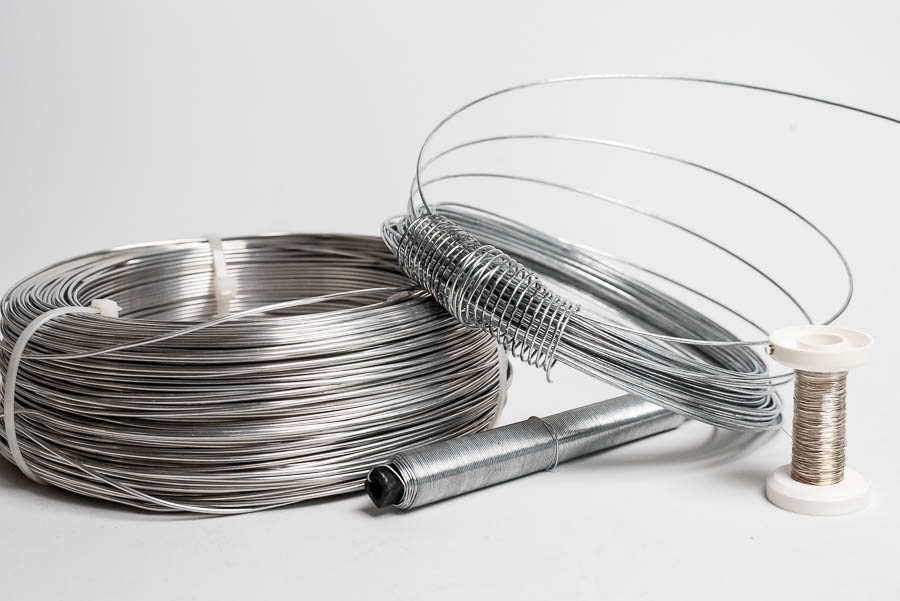
Different Wires I’m using

Wires twisted for Armature
Aluminum Foil
More voluminous parts in sculptures are padded with aluminum foil. This has several advantages: first, you don’t need as much clay. Clay is expensive, so padding it will make a sculpture use up less.
Secondly, it will make the sculpture a bit lighter and less massive.
Thirdly it helps the sculpture to bake „from inside out“. The Foil will heat up fast in the oven and bake the clay from the inside. There is less chance of unbaked clay. If the sculpture is only made of clay, it is harder for the inside to get exposed to the right amount of heat.
You can use your kitchen aluminum foil for this.

Use ordinary kitchen aluminium foil
Tools
Shaping Tools
Shaping tools will help you to refine your sculpture and sculpt little details. Don’t worry too much about them when starting out. You can literally use everything around you as a shaping tool: toothpicks, backs of spoons, dough rollers, chopsticks… There is no need for a huge collection of professional tools to start out.
If you find liking in sculpting and want to pursue the hobby further, it might be easier to invest in some wax-carving tools. They aren’t very expensive and come in a good variety in premade packs. You will find yourself using some more than others, so just try out which ones you like.
I also like to use my silicon brush. This came in a pack with some more silicone brushes that have ballpoint tools on the opposite side of the tool. These come in handy, for example when making holes for eyeballs. I have seen a fair large number of sculpters use these, you might consider getting a silicone brush in the long run.

You can find all kinds of tools around the house!
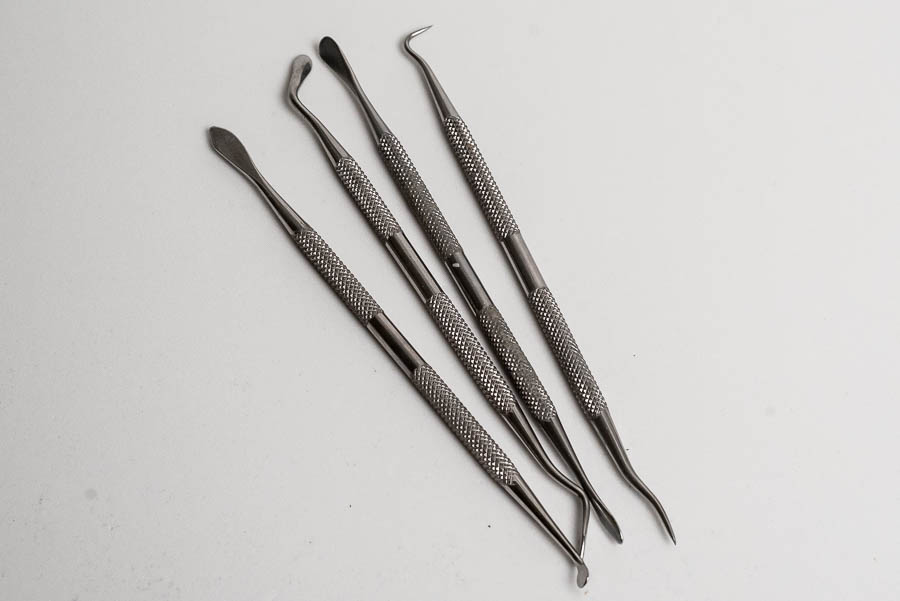
My wax carving tools (of which I use effectively mostly two)
Silicone Brush and Ballpoint tool
Alcohol and Brushes
This might sound a bit weird, but I’m not talking about drinking beer anytime you sculpt. 90% + Alcohol is used with polymer clay like water with ceramic clay. It dissolves the surface of the clay and helps to smoothen it out, remove small scratches and fingerprints. Alcohol behaves a little differently on different clays, so you need to experiment with the clay you’re using and how it reacts.
Brushes or Q-Tips can help you even out the surface or scratching away some uneven parts, depending on clay and brush.
You can start out your first sculpt without this easily though. See if you like it, and then get some alcohol for the next one.

Alcohol works with polymer clay like water with air-drying- or ceramic clay
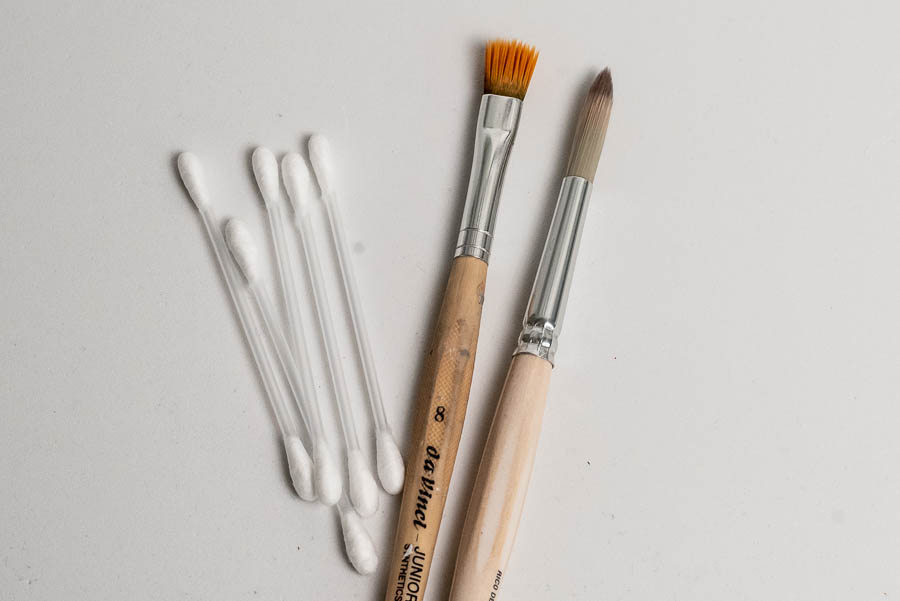
I’m using brushes and Q-Tips to smooth the surfaces
Base
It is often easier if you have something to hold your armature and sculpt. You will see people stick their armature into a base. I use a small block of wood for this that has holes drilled into it. This way I can put the sculpture in there when I can’t hold it in my hand. Or want to rest it somewhere to get things or sculpt details. Later I replace that base with one that fits thematically to the sculpture.
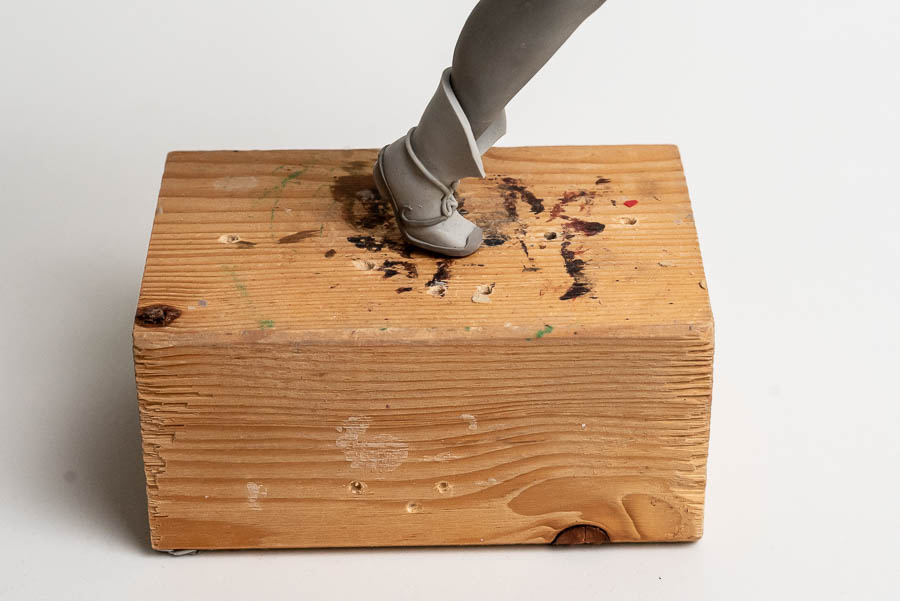
My „work in progress“ base
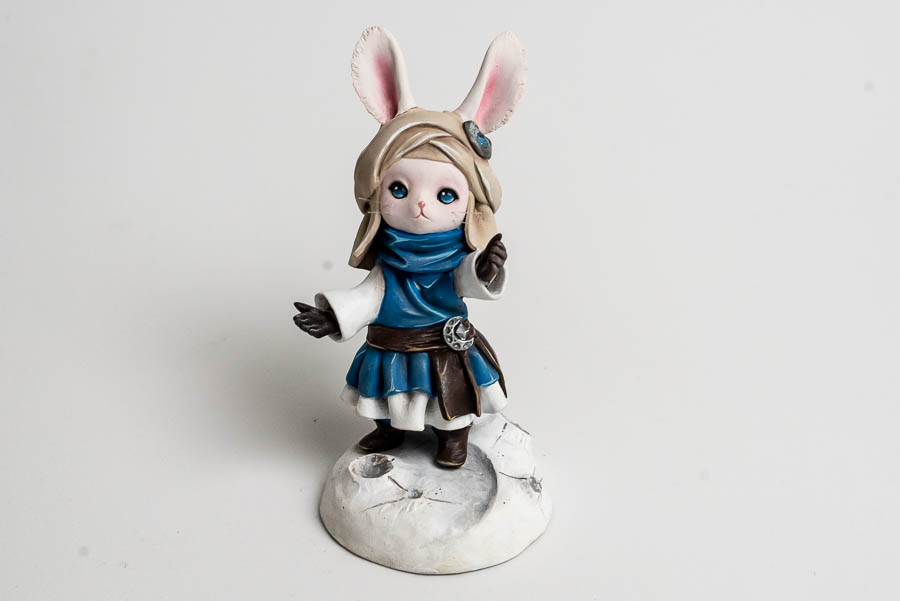
Sculpture with fitting base
Post Processing
Acetone
This is super optional. Acetone is like alcohol on cured clay – it dissolves the surface and helps you smooth out left over fingerprints and remove dust lints on the surface.
Sanding paper
Sanding polymer clay is more of a pain than airdrying clay, but you can use sanding paper to even out the surfaces. Sponges for sanding work great, as they can be cut into smaller pieces to reach smaller parts.
Paint
If you plan on painting your Sculpture, you will also need paint. Acrylic paint works well on most Polymer Clays. They’re a bit porous and take the paint without any sort of primer. From my experience Paint for miniatures works great. Any acrylic paint you have left will suffice to try around with it.
If you want, you can also put varnish on the finished result for a more glossy, or a more matte look. I personally use varnish as a primer to shade my sculptures with pastel chalks.

Acetone helps to remove fingerprints
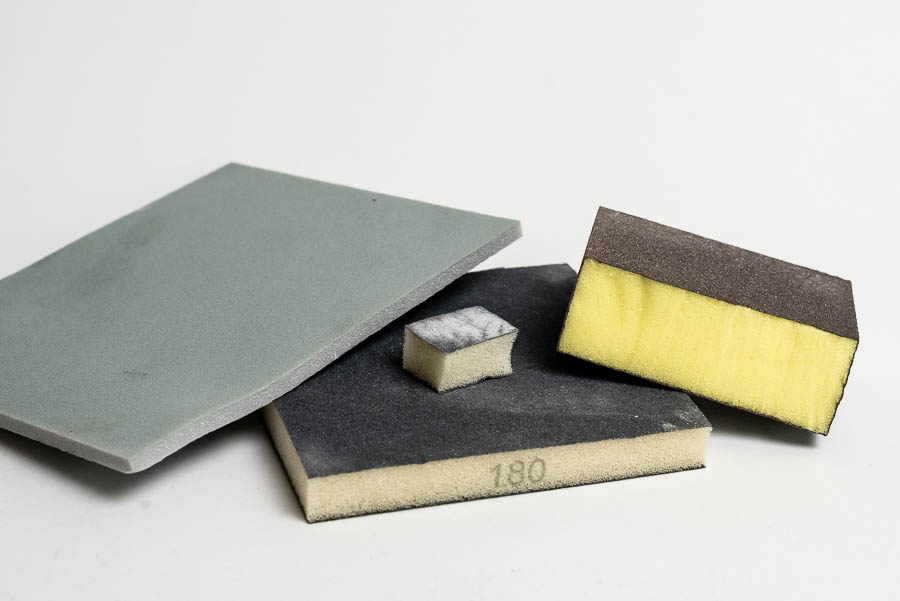
Sanding sponges are great for small details

Miniature paints are great for polymer clay
Got all your stuff? Great! Have a look at my other guides! Here you can find tipps on how to choose your first sculpting project. If you don’t know which clay to choose, I have you covered! Here’s an articles on different clays. Happy Sculpting!

